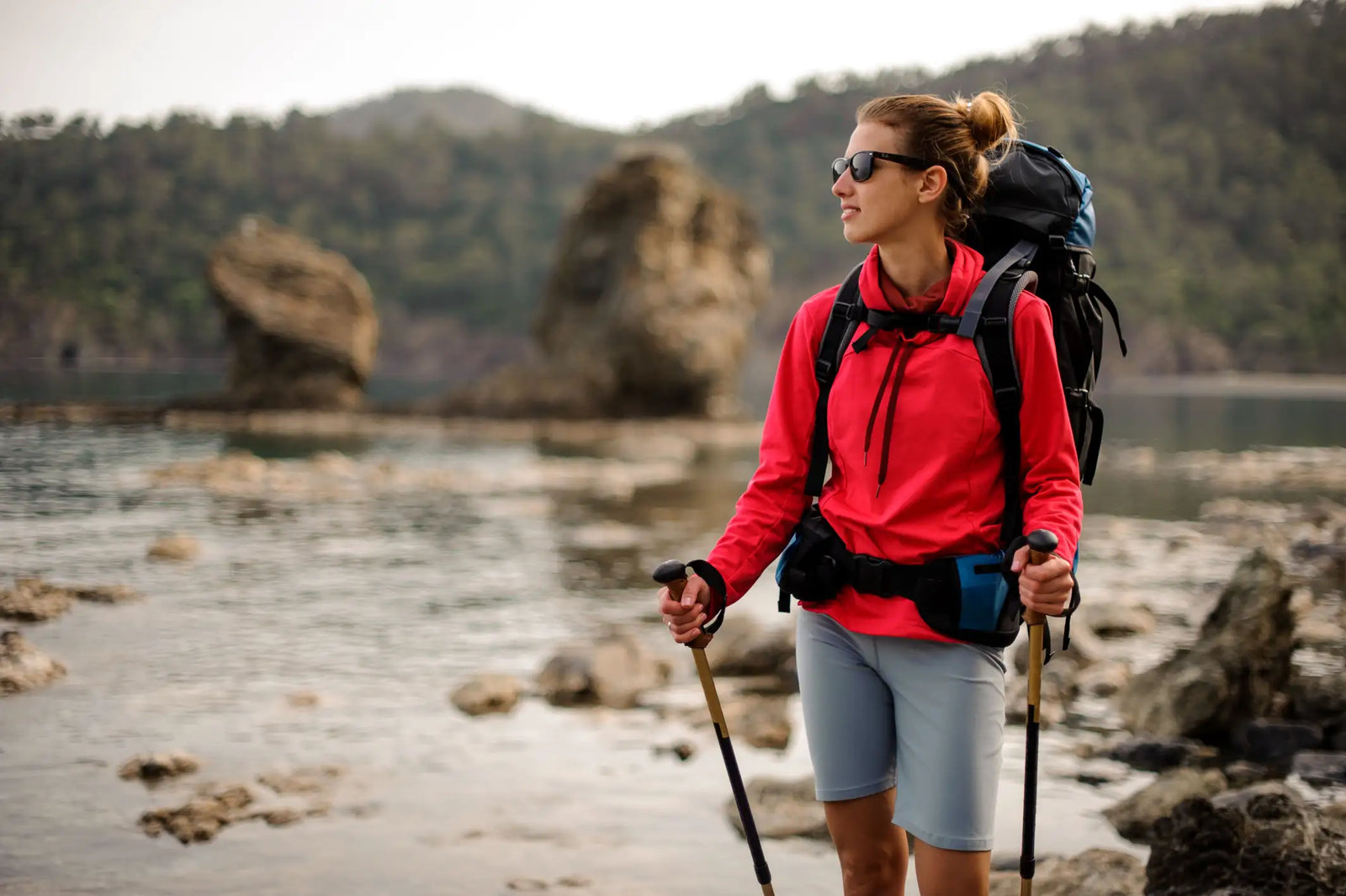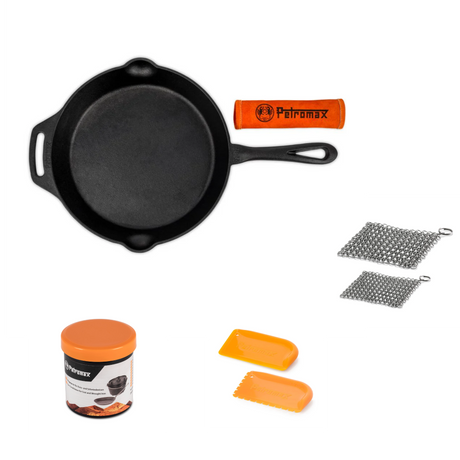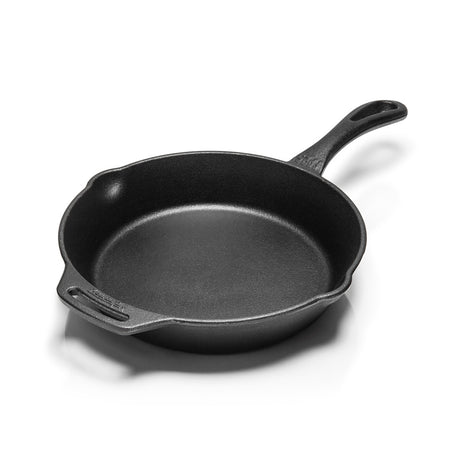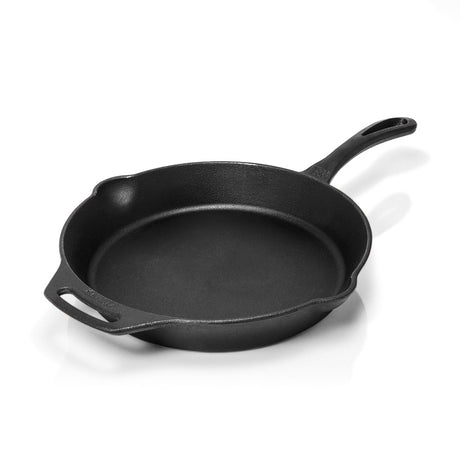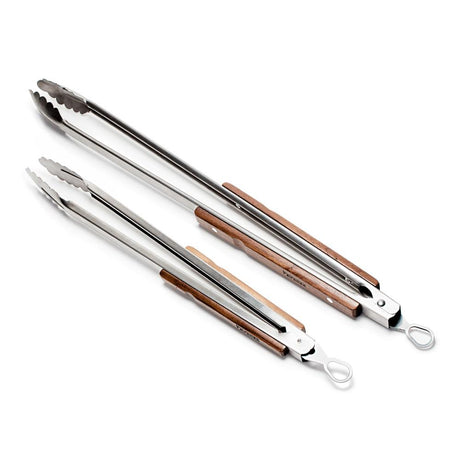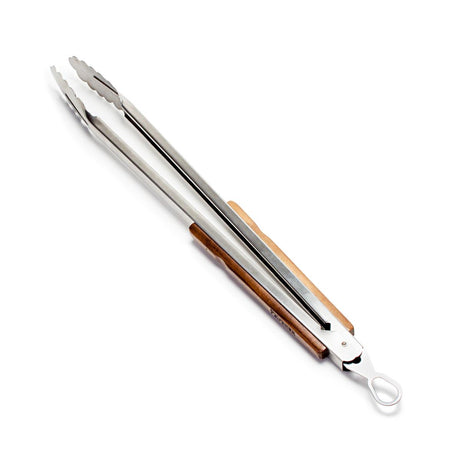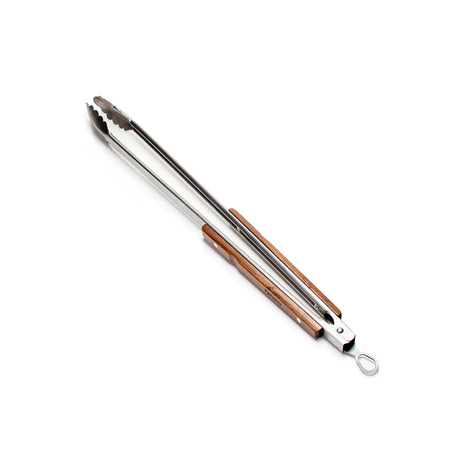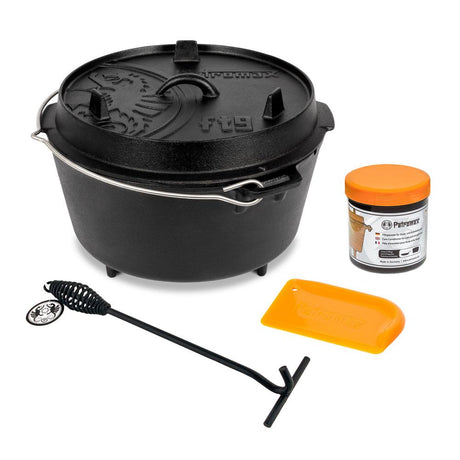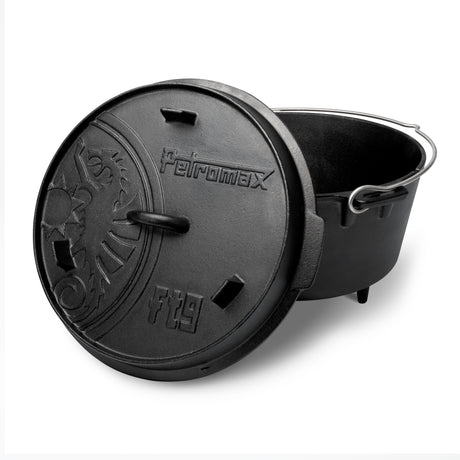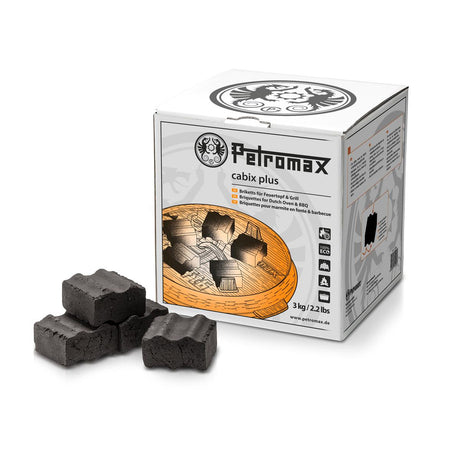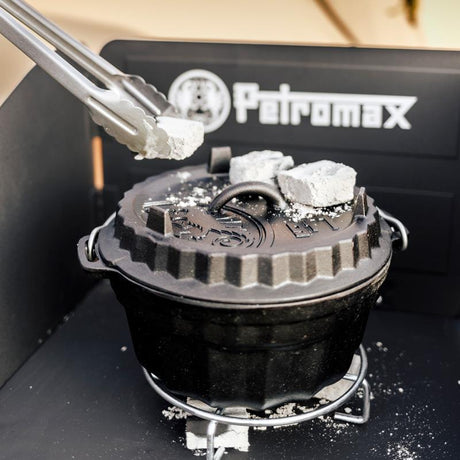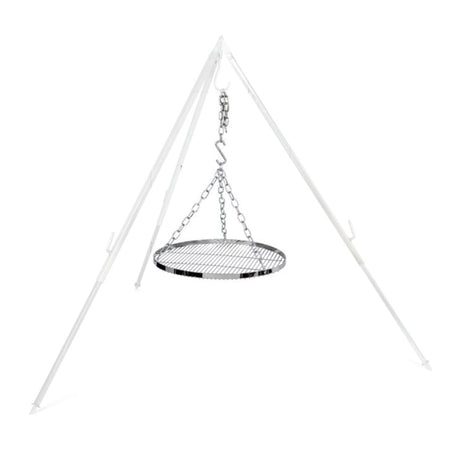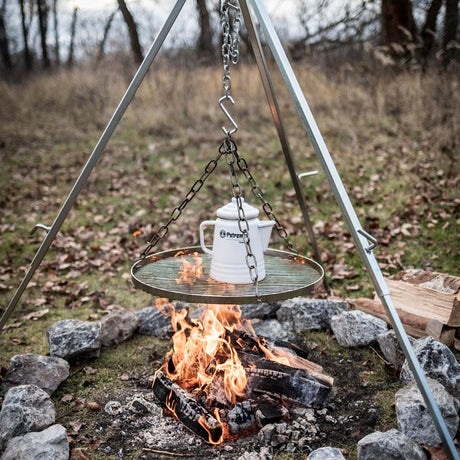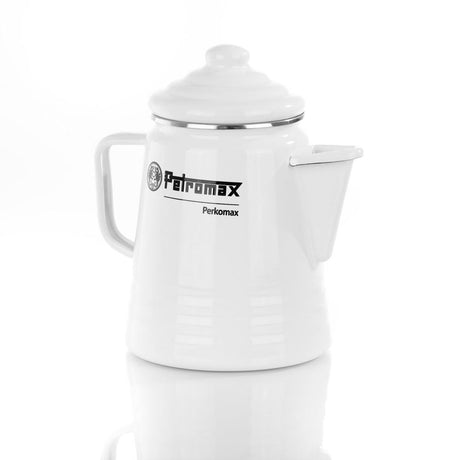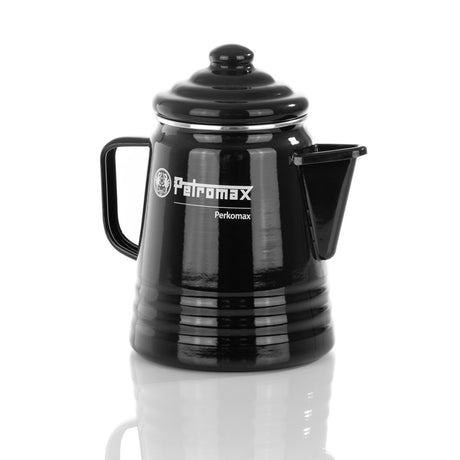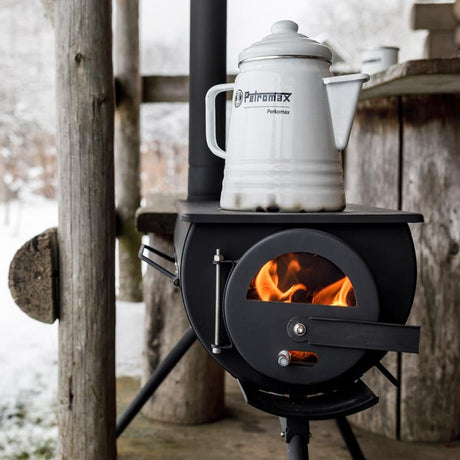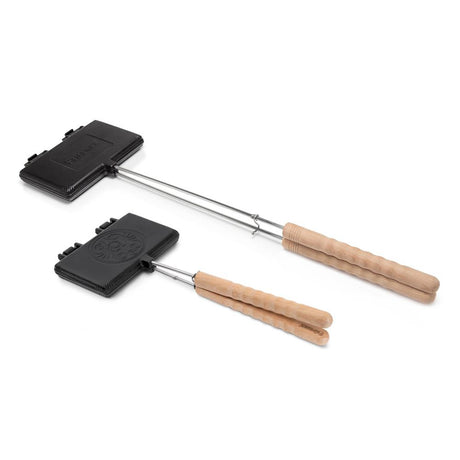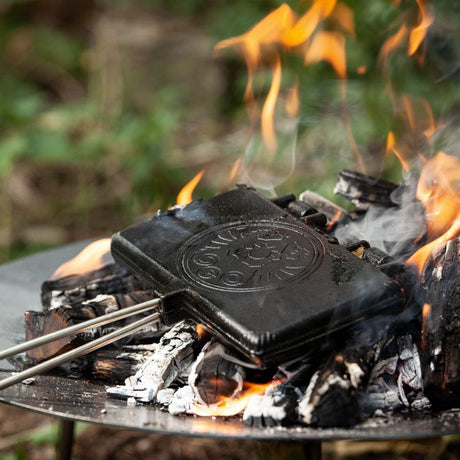You've probably been there: you're in the middle of a beautiful hike, the sun is shining, the view is breathtaking - and suddenly a thunderstorm rolls in. Or you start out in cool morning temperatures, but after two hours uphill you're sweating like crazy. It's at times like these that you realize how important the right clothing really is when hiking. We'll tell you everything you need to know about the right hiking clothing!
Table of contents
What makes the right clothing so important when hiking?
Which materials are best for hiking clothing?
How does the onion principle work for hiking clothing?
How do you choose the perfect hiking pants?
Which jackets provide optimum protection when hiking?
Why are the right hiking boots and hiking socks crucial?
What should you consider when choosing hiking clothing for different seasons?
What functionality should modern hiking equipment offer?
Summary
What makes the right clothing so important when hiking?
The right clothing can make the difference between a fantastic hike and an absolute nightmare. While the wrong clothing can completely ruin a hike, the right equipment ensures that you can concentrate fully on nature and the experience.
When hiking, you are confronted with all kinds of challenges: Sudden changes in the weather, extreme temperature changes between the valley and the summit, physical exertion that makes you sweat, and then again breaks where you quickly cool down. The right clothing helps you to master all these situations.
The secret lies in the onion principle - a fundamental concept for the right hiking clothing. This system is so effective because it allows you to react flexibly to different conditions. Instead of having to choose a single piece of clothing, you can combine different layers and adapt them depending on the situation.
When choosing clothing for hiking, you should consider several important factors: the time of year you are hiking, the duration of your hike, the terrain you want to tackle and, of course, your personal preferences. A summer hike through the Black Forest lasting several hours requires completely different equipment than an autumn hike in the Alps.
Which materials are best for hiking clothing?
Choosing the right material is crucial for your well-being on the hike. Here is an overview of the most important materials:
| Material | Advantages | Disadvantages | Best use |
|---|---|---|---|
| Merino wool |
|
|
Base layer, longer tours |
| Synthetic fibers |
|
|
Activities with a lot of sweat |
| Cotton |
|
|
Not recommended for hiking |
Why cotton is problematic when hiking:
- Retains moisture like a sponge
- Dries extremely slowly
- Completely loses its insulating properties when wet
- Can even be dangerous in the cold (hypothermia)
The optimal combination of materials depends on your hiking conditions. In summer, you can opt for lightweight synthetic materials that dry quickly and offer good breathability. In winter, merino wool is often the better choice as it keeps you warm even when damp and prevents odor build-up.
How does the onion principle work for hiking clothing?
The onion principle is the be-all and end-all of hiking clothing. It is based on three main layers that work together to provide you with optimum protection: the base layer, the insulating layer and the protective layer.
The base layer, also known as functional underwear, lies directly on the skin and has a very important task: it transports moisture away from the body. This keeps you comfortable even on strenuous hikes. You should definitely opt for materials such as merino wool or synthetic fibers.
Forget cotton underwear! This retains moisture and can lead to hypothermia in cool temperatures. A wet cotton T-shirt in windy weather is anything but pleasant.
The middle layer, often a fleece sweater or similar mid-layer, serves as an insulating layer. It retains heat and protects you from the cold while remaining breathable. Fleece is particularly suitable because it insulates even when damp and dries quickly.
The outer layer protects you from environmental influences such as wind, rain or snow. This layer should be both protective and breathable. Otherwise there will be a greenhouse effect and all the work of the inner layers will have been in vain.
The 3 layers of the onion principle in detail:
| Layer | Function | Materials | Examples |
|---|---|---|---|
| Base layer | Moisture transport | Merino wool, polyester | Functional underwear, thin shirts |
| Insulation layer | Heat retention | Fleece, down, Primaloft | Fleece jacket, softshell jacket |
| Protective layer | Weather and wind protection | Gore-Tex, other membranes | Hard shell jacket, rain jacket |
Why functional underwear is so important:
- Transports sweat directly away from the skin
- Keeps the skin dry and prevents chilling
- Only works with the right materials
- Never use cotton underwear!
Practical tips for the onion principle:
- Layers should lie loosely on top of each other
- Not too many layers at the same time (becomes uncomfortable)
- Always choose a slightly larger outer layer
- When it's warm: take off layers, don't leave them all on
- For breaks: add a layer before you get cold
The beauty of the onion principle is its flexibility. If you get warm, simply take off a layer. If it gets cooler or starts to rain, put it back on. This allows you to react to all kinds of weather without compromising your comfort.
Functional clothing plays a central role in a successful layering system.
How do you choose the perfect hiking pants?
The right hiking trousers are at least as important as the right top. You can choose between long hiking pants, zip-off models and shorts - depending on where and when you are out and about.
Long hiking pants offer the best protection against thorns, stinging nettles and UV radiation. They are ideal for hiking through dense undergrowth or in cooler temperatures. Zip-off hiking pants are true all-rounders - you start with long legs and convert them into shorts if necessary. This is particularly practical on hikes with large differences in altitude.
Shorts are perfect for hot summer days and less demanding hiking trails. They offer maximum freedom of movement and keep you cool in high temperatures.
Types of hiking pants and their areas of use:
| Trouser type | Advantages | Disadvantages | Ideal for |
|---|---|---|---|
| Long hiking trousers | Full protection, UV protection, protection from thorns | Can get too warm in the heat | Mountain hiking, fall/winter, dense undergrowth |
| Zip-off trousers | Flexible, 2-in-1 solution | Zipper can get in the way | Tours with differences in altitude, changeable weather |
| Hiking shorts | Maximum cooling, full freedom of movement | Little protection, UV risk | Hot summer days, easy paths |
Checklist: What a good pair of hiking shorts must be able to do:
- ✅ Robust: Withstands contact with rocks and branches
- ✅ Elastic: Allows large steps and climbing movements
- ✅ Quick-drying: Prefer polyester or blended fabric
- ✅ Practical pockets: Securely closable, easily accessible
- ✅ Fit: Not too tight, not too loose
- ✅ Waistband: Comfortable even with a rucksack hip belt
Seasonal recommendations:
- Spring/autumn: Zip-off pants for flexibility
- Summer: Shorts + long pants in a backpack
- Winter: Lined or reinforced hiking trousers
Practical pockets are also important. You should have enough space for your cell phone, energy bars and small items of equipment without them getting in the way while walking. Many modern hiking pants also have special pockets for GPS devices or trekking poles.
Which jackets provide optimum protection when hiking?
You have a wide choice of hiking jackets, and each type has its own particular strengths. The most important categories are softshell jackets, hard shell jackets, fleece jackets and down jackets.
Jacket guide: the right protection for every situation
| Jacket type | Jacket features | Area of use | Price level |
|---|---|---|---|
| Softshell jacket | Windproof, water-repellent, breathable | All-rounder for most tours | €€ |
| Hard shell jacket | Waterproof, windproof, less breathable | Heavy rain, extreme conditions | €€€ |
| Fleece jacket | Warm, breathable, not wind/waterproof | Insulation layer, dry conditions | € |
| Down jacket | Very warm, light, sensitive in wet conditions | Cold, breaks, dry conditions | €€€ |
Important terms explained:
- Waterproof vs. water-repellent: Waterproof = completely waterproof (for continuous rain), water-repellent = short showers OK
- Breathability: How well water vapor (sweat) is transported to the outside
- Pack size: How small the jacket can be packed up
Guide to choosing the right jacket:
When choosing a jacket, you should pay attention to several crucial factors. Waterproofness is important, but you only need real waterproofness if it is going to rain for a long time. A water-repellent jacket is often completely sufficient. Breathability is at least as important - a jacket that doesn't 'breathe' will leave you bathing in your own sweat.
You need a softshell jacket if:
- You hike frequently and are looking for a versatile jacket
- The weather is usually dry to slightly rainy
- You value wearing comfort
- You don't want to spend too much money
You need a hardshell jacket if:
- You are often out and about in bad weather
- You go on multi-day tours
- You hike in rainy areas
- Absolute waterproofness is important
Traditional materials such as loden are experiencing a renaissance. A loden jacket offers natural weather protection and is particularly durable - strong fabric for real adventures.
Weight and pack size are particularly important on longer hikes. A jacket that packs down small is worth its weight in gold when you're not wearing it.
Why are the right hiking boots and hiking socks crucial?
Your feet will carry you through the entire hike - that's why high-quality hiking boots are the most important investment of all. Bad shoes can not only be uncomfortable, but can also lead to injuries.
Shoe guide: the right choice for every terrain
| Shoe type | Characteristics | Terrain | Ankle protection |
|---|---|---|---|
| Hiking shoe | Lightweight, flexible, breathable | Hiking trails, forest paths | Low |
| Hiking boots | Robust, stable, waterproof | Scree, difficult terrain | High |
| Trekking boot | Middle ground, versatile | Multi-day tours, mixed terrain | Medium |
Hiking socks: More than just socks
Even the best hiking boots are useless without the right hiking socks. They are the important connecting element between your foot and the shoe. Special hiking socks are designed differently to normal socks - they have padding in exposed areas, are seamless and dry quickly.
Hiking socks should be able to dry quickly. If your feet stand in damp socks for a long time, there is a risk of blisters and skin problems. Modern hiking socks made from merino wool or synthetic materials reliably wick away moisture and dry quickly.
Why special hiking socks are important:
- ✅ Blister protection: padding in exposed areas
- ✅ Moisture management: Transport sweat away from the foot
- ✅ Seamless: Prevent pressure points and chafing
- ✅ Quick-drying: Do not stay wet and clammy
- ✅ Odor-inhibiting: Especially merino wool
The perfect combination:
| Hiking type | Recommended shoes | Recommended socks |
|---|---|---|
| Day hike, easy | Low hiking shoe | Thin hiking socks |
| Day hike, difficult | Hiking boots | Medium cushioning |
| Multi-day tour | Robust trekking shoes | Thick trekking socks |
| Mountain hiking | High hiking boots | Reinforced mountain socks |
Professional tips for the shoe-sock combo:
- Always take two pairs of socks with you (for changing)
- Buy shoes in the afternoon (feet are swollen then)
- Lace up correctly: How to avoid pressure points
- Never wear new shoes on long tours (break them in beforehand!)
- React immediately to blisters: Change socks or blister plasters
The right combination of hiking boots and socks is crucial for maximum comfort on long hikes. Your feet will carry you through the entire hike - that's why high-quality hiking boots are the most important investment of all.
What should I look for in hiking clothing for different seasons?
Each season brings its own challenges, and your hiking clothing should be adapted accordingly.
Seasonal guide: the right clothing for every season
| Season | The challenges | Priorities | Must-haves |
|---|---|---|---|
| Spring | Changeable weather, mud | Flexibility, layering | Zip-off trousers, rain jacket |
| Summer | Heat, UV radiation, thunderstorms | Cooling, protection | UV shirt, shorts, rain protection |
| Autumn | Wet, cold, slippery paths | Thermal insulation, grip | Warm layers, waterproof shoes |
| Winter | Snow, ice, extreme cold | Insulation, waterproofness | Winter jacket, lined trousers |
Summer hikes: Tips for hot days
In summer, UV protection and ventilation are paramount. Light, bright clothing with a UV protection factor protects you from sunburn and overheating. Breathable materials and well-designed ventilation systems help prevent you from overheating even in the heat. Special tips for hiking in extreme heat can help you to cope with extreme temperatures.
Nevertheless, you should always have a light jacket with you on summer hikes - mountain weather can change quickly and it can get chilly in the evenings, even in summer.
This is part of your summer equipment:
- ✅ UV-protective clothing: long sleeves, high collar
- ✅ Bright colors: Reflect the sun's rays
- ✅ Breathable materials: Synthetic or merino
- ✅ Ventilation slits: For extra air circulation
- ✅ Rain protection: Also important in summer for thunderstorms
Special challenges in summer:
- Avoid overheating: Layers are better than too thick clothing
- Sunburn: Even cloudy days are dangerous
- Dehydration: drink more, salty snacks
- Thunderstorms: check the weather forecast, bring rain protection
Here you can find detailed tips for hiking in hot weather.
Winter hikes: Stay warm and dry
Winter hikes require a sophisticated layering system. Insulation and water resistance are the most important factors. You need a warm base and insulation layer as well as a waterproof outer layer. Don't forget that you will sweat during exertion, even in winter - the layers should therefore remain breathable despite their warming function.
The winter layering system:
- Base layer: Merino wool (warms even when wet)
- Insulation layer: fleece or down
- Outer layer: Waterproof hard shell jacket
- Extras: Hat, gloves, gaiters
Special winter equipment:
- Waterproof gloves: For contact with snow
- Insulated hiking boots: Or gaiters
- Warm hat: A lot of heat is lost through the head
- Spare clothing: In case something gets wet
Transitional periods: Be prepared for everything
The transitional seasons of spring and fall are particularly treacherous. The weather can change quickly and you need to be prepared for anything. The onion principle is particularly useful here: several thin layers are more flexible than one thick jacket.
Spring & fall strategy:
- Several thin layers instead of one thick one
- Waterproof equipment for rain showers
- Warm reserve layer for temperature drops
- Non-slip shoes for wet leaves/mud
For multi-day hikes, there is another aspect to consider: you don't want to carry too much luggage. This calls for versatile items of clothing that are suitable for different conditions.
What functionality should modern hiking gear offer?
Modern hiking clothing goes far beyond simple protection. Well thought-out functionality can significantly improve your hiking experience.
Modern hiking gear: features that really help
| Feature | Benefit | Importance | Typical products |
|---|---|---|---|
| UV protection | Prevents sunburn | High (summer/high altitude) | UV shirts, hiking trousers |
| Reflective elements | Visibility at dusk | Medium | Jackets, rucksacks |
| Detachable parts | Versatility | High | Zip-off pants, hoods |
| Ventilation slits | Temperature regulation | High | Backpacks, jackets |
| RFID protection | Data protection | Low | Special bags |
Pack size and weight: why every gram counts
Pack size and weight are decisive factors, especially on longer hikes. Every gram counts when you're carrying it on your back for hours on end. Modern materials make it possible to offer protection and comfort with minimal weight.
Weight comparison of typical equipment:
- Cotton t-shirt: ~200g vs. functional shirt: ~120g
- Jeans: ~600g vs. hiking pants: ~300g
- Normal jacket: ~800g vs. packable jacket: ~200g
- Savings per outfit: up to 1kg!
Pack size champions:
- Down jackets: Shrink to glove size
- Ultralight rain jackets: fit in every trouser pocket
- Zip-off pants: one pair of trousers = two items of clothing
Outdoor equipment is constantly evolving. New materials, innovative cuts and well thought-out details can significantly improve your hiking experience.
Another important aspect is the care and durability of your equipment. High-quality hiking clothing is an investment that will pay off for years - provided you look after it properly.
By the way: if you organize your equipment optimally, hiking will be even more enjoyable. The guide to packing your rucksack correctly will help you do this.
Summary: The most important points at a glance
The right hiking clothing is the key to every successful hike. With the right materials, the onion principle and well thought-out equipment, you are equipped for all situations.
✅ The most important findings at a glance:
| Area | Key message | Practical tip |
|---|---|---|
| Materials | Merino wool & synthetics > cotton | Never wear cotton underwear when hiking |
| Layering | Onion principle with 3 layers | Put on and take off layers flexibly |
| Pants | Robust, elastic, quick-drying | Zip-off for maximum flexibility |
| Jackets | Depending on the weather: softshell vs. hardshell | Softshell for 80% of all hikes |
| Footwear | Quality is the most important investment | Buy in the afternoon, break in beforehand |
| Seasons | Adapt equipment to conditions | Check the weather forecast before every tour |
| Modern features | Functionality + comfort | Pay attention to pack size and weight |
🎯 Your hiking clothing checklist:
- ✅ Functional underwear instead of cotton
- ✅ Hiking pants with elastane content
- ✅ Softshell or hard shell jacket depending on the weather
- ✅ High-quality hiking boots + special hiking socks
- ✅ Additional layer for temperature changes
- ✅ Rain protection even in good weather
- ✅ Spare socks for longer tours
With the right clothing, every hike will be an experience you'll remember - and not an ordeal you'll want to forget. Invest in good equipment and it will serve you well for years to come.
